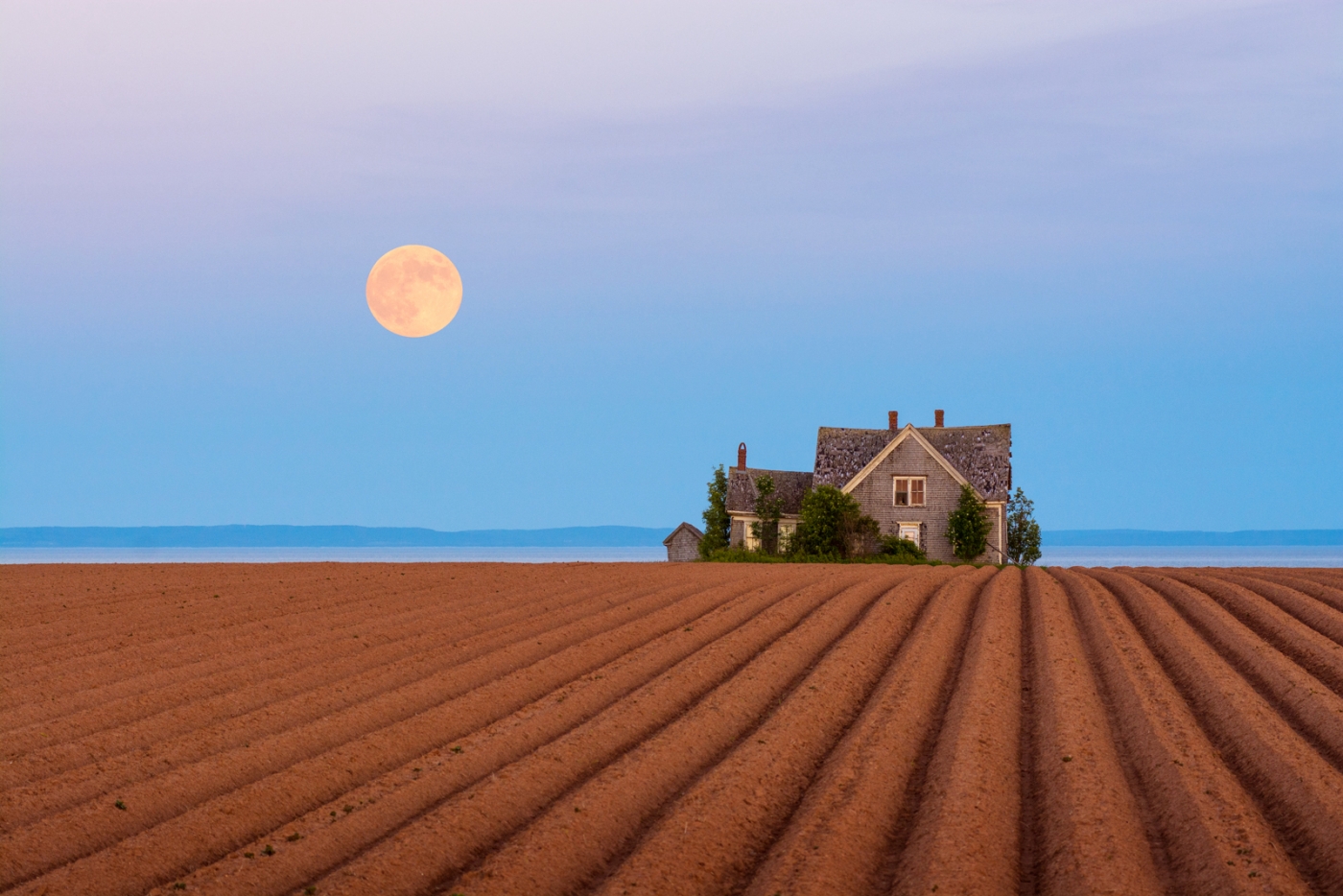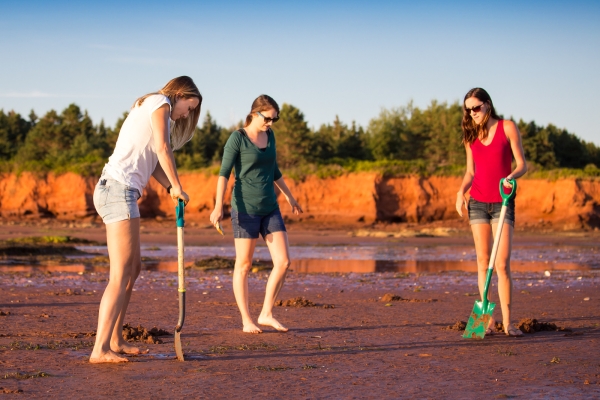Digging for Clams on Prince Edward Island
Published April 25, 2025 | Tourism PEI / Tourisme IPE
One might think that clam digging is as easy as going to the shore at low tide with a round-pointed shovel or a garden fork, a bucket and water shoes. Not quite! Clam digging can be like a game of hide-and-seek as clams bury themselves in the sand and the size of your harvest will vary depending on the time of the month and your location.
Before digging, always look for posted signage to indicate if an area is closed to harvesting.
Look for coin-sized holes in the flattened sand with signs of bubbles – a tell-tale sign of life down under. When a clam burrows into the sand, it makes a hole or depression with its neck to siphon in water. A big hole would be the size of an adult finger.
Dig around the hole about 7 or 8 inches into the ground. If you notice water squirting up, you’ve probably located a clam. Dig gently, yet quickly, so as not to damage the clam with your shovel. Although it may be tempting to take all the clams you dig, there are minimum size limits that must be considered for softshell clams (50 mm), bar clams (102 mm) and quahogs (50 mm). There are no size limits for razor clams. If your clam is the right size, place it in a bucket of salt water. If not, put it back into the hole you dug and watch it quickly bury itself.
Although you do not need a licence to dig clams, it’s important to keep in mind that shellfish is a commercial fishery; conservation is important. Please respect that the daily catch limit for all species is 100 per person in total.

Interestingly, the phase of the moon will play a part in your harvest. The best time to dig for clams is when the tide is lowest. This occurs once a month at the time of the full moon, also known as spring tides. When the moon is full, the gravitational pull of the sun and the moon upon the earth is most powerful. During this time, the high tides are higher and the low tides lower. This means that you can go out farther on the sand bars where the clams burrow deep.
Once you've harvested enough clams, take them from your bucket and rinse them once again in the salt water of the ocean. Bring home your clams covered in fresh salt water.
After you have allowed time for the live clams to purge, put them in a pot with water to gently steam. Cook for about 7-9 minutes until the shells open.
Season Dates
Each year, Fisheries and Oceans Canada sets the open and closed dates for this recreational fishery based on several factors, including water temperature. Season dates are as follows:
- Bar clams: from April 1 to December 31
- Bay quahaugs: from July 18 to November 30 from sunrise to sunset and no harvesting on Sundays
- Razor clams: from April 1 to December 31
- Soft-shell clams: from May 1 to October 31 from sunrise to sunset
For more information and to view the shellfish harvesting map, visit Shellfish and Invertebrates - Fisheries & Oceans Canada.
